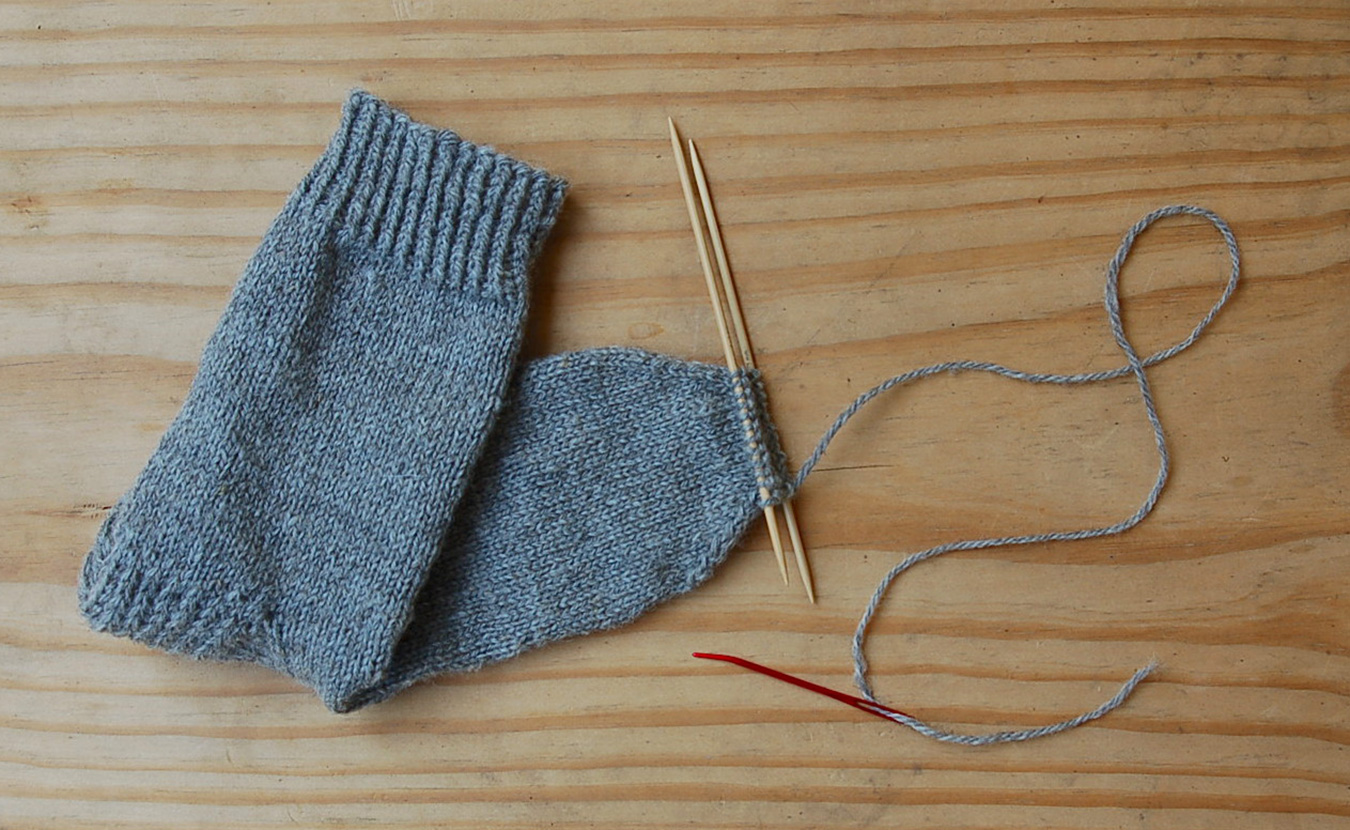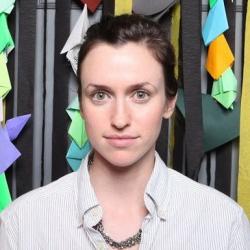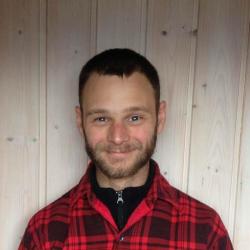Click here to read Part 1: The Wool.
Click here to read Part 2: The Dye.
The lowly sock. Is there any garment more humble? It gets dirty, sweaty, holey, and often lost. As a knitter, I have made many garments: sweaters, tank tops, hats, scarves, headbands, mittens, even leg warmers. But not socks. It has always seemed to me that if I’m going to spend so much time on a project — hours, days, weeks! — it should be something really special, something I can wear often and in plain view. Not a lowly sock.
But I was wrong.

One of Lindsay’s two skeins of Marble Hill Farm’s natural gray sock-weight yarn. | Photo by Lindsay Welsch Sveen
Last fall, I embarked on a farm-to-yarn journey with Whitney and Kip Schlegel from Marble Hill Farm. Whitney introduced me to her flock of Shetland sheep, her natural-dyeing expertise, and her general woolly know-how. She taught me about the process by which a sheep’s fleece becomes roving (unspun wool), ready to be crafted into any number of things. As fall turned to winter, Whitney planned and organized her fiber CSA while I hibernated and dreamt of what magical creations I might knit up with her yarn.
The next time I saw the Schlegels, it was spring again. In fact, it was Shearing Day: the spring ritual when all of their sheep get haircuts and locals are invited to witness the tradition. Most farm-goers were there to get a peek at the new lambs looking wobbly and confused beside their newly shorn mothers. But I didn’t go to pet lambs. (Okay, I didn’t go only to pet lambs.) The main attraction for me was not this year’s crop — I was more interested in the yarn and roving that were processed and dyed using last year’s fleeces.
Once I pulled myself away from the bleating little babes, I saw the CSA fiber shares on display just outside of the sheep barn. All of Whitney’s dyed wool was in roving form, which Whitney had sorted into bundles of complementary shades. After drooling over these bundles — the results of our dyeing experiments last fall — my eye eventually landed on a container off to the side of the display. Inside were stacked skeins of natural, undyed gray yarn. Now this was what I came for.

Lindsay (center) shares a laugh with fellow knitters, Faith Hawkins (left) and Karen Ellis, as they try out the Marble Hill Farm yarn for the first time. | Photo by Samuel Welsch Sveen
Gorgeous as the dyed roving was, I haven’t yet learned the art of spinning, so the ready-to-go skeins of yarn were calling my name. This yarn, spun by Round Barn Fiber Mill in Durand, Illinois, from a combination of Whitney’s and another farmer’s Shetland fleeces, comes in two different weights: a thin sock weight and a slightly thicker DK weight. In the interest of trying something new, I opted for the lighter sock-weight yarn. (I often go for thicker worsted weight — or even chunkier — because it knits up more quickly.) I waved goodbye to Whitney, Kip, and the lambs and headed home with the two gray skeins in my bag. Finally, this farm-to-yarn process had reached its familiar endpoint — yarn!
Then for the fun part: What did this yarn want to be? I don’t usually pose existential questions to inanimate objects, but this is actually a valid question in knitting. Every yarn is different — in fiber, breed, texture, sturdiness, drape, ply, size, etc. — so there’s a bit of matchmaking that goes into choosing a yarn for a project and vice versa. I knitted up a small rectangle, or “swatch,” in two different stitch patterns to see how the yarn behaved. It was lovely — woolly but still soft, fine but still fluffy, and polished but with a subtle halo. Still, I had yet to choose a specific project.

Lindsay’s first pair of “slightly imperfect but totally lovable” socks complete. | Photo by Lindsay Welsch Sveen
Ultimately, I had to admit that all signs were pointing to socks. First, the yarn itself was spun into a fine sock-weight thickness — it’s right there in the name! Then, Whitney introduced me to her friend and fellow knitter Faith Hawkins, who just so happens to be a sock-knitting expert. I was all but convinced when an Instagram friend in Australia (hooray for the cyber-fiber community!) announced a sock knit-along, thus sealing the deal. I would knit my first pair of socks.
I just had one more thing to learn: How to actually knit the socks! Here I had some help from Faith, the sock guru. You can (and should!) find her teaching classes at Yarns Unlimited, the yarn store just south of the downtown Square in Bloomington. I was lucky enough to get a private lesson from Faith on a perfect June evening out at the Schlegels’ farm on the sheep deck. Faith showed me the basics of sock construction — from cuff to heel gusset to toe. She even offered some handy tips for keeping cuff stitches elastic and avoiding gaps when using double-pointed needles — exciting stuff if you’re a knitting nerd like me! After that, I hardly put my needles down, and, within a week, I had my new pair of socks. Not perfect, and nothing fancy, but a sturdy skein’s worth of gray socks.
Despite my initial skepticism, I realized in the end that socks are actually the perfect project to honor Whitney’s yarn. I thought they were too lowly to be special, but now I see that socks are special because they are “lowly” — they live close to the earth, just like Whitney and her sheep.




No Replies to "Farm to Yarn: The Craft"